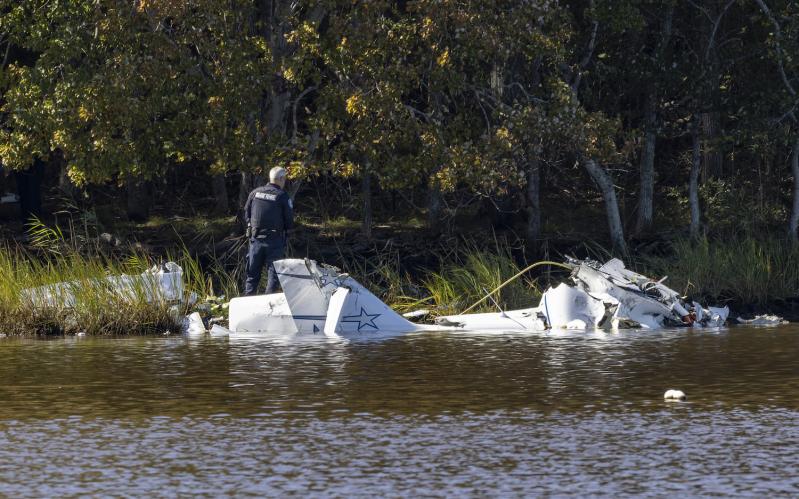It was only 15 minutes from the time Kent Feuerring took off from East Hampton Town Airport in his Seamax M-22 on the pristine morning of Oct. 6, 2022, until the right wing separated from the plane, causing him to crash in Three Mile Harbor. It took nearly two years for the National Transportation Safety Board to release its final report on the fatal accident, which they did last week, blaming the manufacturer for using a nut that couldn’t handle the job it was given.
A preliminary report released a month after the accident described undamaged threads on the bolt to which the nut would have been attached. The final report contradicted that, noting, “The bolt contact surfaces on the thread flanks showed indications of repeated contact loading.” The nut was no longer on the bolt because it broke off, but “fracture patterns” proved that it was “locked in place at the time of the failure.”
The report dated Sept. 18 and written by Ryan Enders, the investigator in charge, concluded that the probable cause of the accident was “An inflight separation of the right wing as a result of the manufacturer’s application of a bolt and nut in the upper wing strut attachment point that was inconsistent with the nut design intent and usage limitations.”
The threads of the nut sheared due to strain. Further, the nut on the left wing of the plain “revealed threads that were partially fractured, rolled and displaced, with similar rolled thread deformation as observed on the right wing nut,” according to the report. That likely “represented an earlier stage of the failure progression in the joint,” meaning it too was set to fail.
The report cites surveillance video from the airport. Mr. Feuerring, who was the president of the East Hampton Aviation Association, arrived at 11:59 a.m., pulled the airplane out of the hangar at 12:06 p.m., performed a preflight inspection, and started the engine at 12:09 p.m. At 12:14, he taxied for departure. He took off at 12:19 p.m. and flew south until he ran parallel to the shoreline of the Atlantic. At Two Mile Hollow Beach in East Hampton Village, he turned north. Shortly after, “Contact was lost as the airplane was over Three Mile Harbor.”
The plane crashed and exploded in four feet of water in the harbor. The wing landed 770 feet away, in a tree.
According to the report, the self-locking nut, which has been used since 1991, was effective only if “the threaded parts are held by a positive locking device.” In the case of the Seamax M-22, they were not. The nut was “intended for use in shear applications” and not “at the outboard attachment location,” which “would be loaded primarily in tension.”
After the crash, in December 2022, the Federal Aviation Administration recommended that “repetitive inspections for fastener security of the strut attachment hardware be completed before each flight.” In February, Seamax required an inspection of the hardware, but it wasn’t until September 2023, nearly a year after Mr. Feuerring’s death, that it recommended replacement. That fact is more glaring given the fact that, even earlier, in February of 2021, the right wing separated from another Seamax M-22 in Italy, causing another fatal accident.
The Seamax M-22 is an amphibious light-sport aircraft with wings that fold to allow easy transport. On its website, it shows a beached plane in crystalline waters, its cockpit door open. The plane flown by Mr. Feuerring was manufactured in 2022 and registered to N46PD, a limited liability company at 300 Pantigo Place, Suite 102, which matches the address for the Sabin Metal Corporation. Its listing price was $189,400.
A call to Seamax to ask why it failed to note the recommended use of the nut, and why it took nearly a year after Mr. Feuerring’s crash to recommend replacement of such nuts, went directly to voice mail and was unreturned. Mr. Feuerring was 57 at the time of the accident and was flying alone. He was an experienced pilot and described by others as meticulous and careful.



